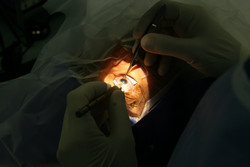Novel technology for medical implants
Medical implants are widely used to repair vision or hearing problems following injury. In addition to retinal degeneration and damaged cochlea, such reconstructive approaches can be used to treat traumatic spinal injuries, drug-resistant epilepsies, psychiatric disorders and chronic neurodegenerative pathologies. These devices connect living tissue to man-made electronic systems. The aim of the EU-funded NEUROCARE(opens in new window) (Neuronal nanocarbon interfacing structures) project was to create innovative retinal, cortical and cochlear implantable devices. To achieve this, the consortium improved interfacing between the electronic implants and living cells using low-cost, carbon-based materials, well-adapted for medical implants. These materials rely mainly on nanocrystalline diamond thin films and graphene layers, offer a wide range of electronic properties, and are bio-inert and physically robust. The consortium successfully fabricated flexible graphene microelectrodes and used diamond coatings in electrophysiology microelectrodes arrays, cochlear implantable electrodes and retinal implants. The design of the devices was scaled up from 2D to 3D structures and their biocompatibility was assessed in vivo in animal models. Overall, the proposed nano-structured 3D materials demonstrate improved performance by two orders of magnitude and decrease the level of noise. This increase in resolution is desirable to improve the specificity with which the implant could interact with the network of cells in a tissue. The NEUROCARE nanobioelectronic devices will find application not only in the medical treatment of vision, hearing and movement, but also in in vitro pharmacological research. Importantly, the study has paved the way for novel implantable arrays of electrodes, thus addressing the ability to stimulate neural tissues in vivo.







